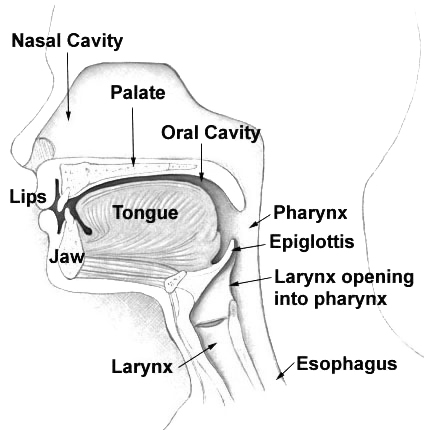Domed Consonant on:
[Wikipedia]
[Google]
[Amazon]
 In
In
 In
In linguistics
Linguistics is the scientific study of language. The areas of linguistic analysis are syntax (rules governing the structure of sentences), semantics (meaning), Morphology (linguistics), morphology (structure of words), phonetics (speech sounds ...
, specifically articulatory phonetics, tongue shape describes the shape that the tongue assumes when it makes a sound. Because the sibilant
Sibilants (from 'hissing') are fricative and affricate consonants of higher amplitude and pitch, made by directing a stream of air with the tongue towards the teeth. Examples of sibilants are the consonants at the beginning of the English w ...
sounds have such a high perceptual prominence, tongue shape is particularly important; small changes in tongue shape are easily audible and can be used to produce different speech sounds, even within a given language.
For non-sibilant sounds, the relevant variations in tongue shape can be adequately described by the concept of secondary articulation, in particular palatalization (raising of the middle of the tongue), velarization (raising of the back of the tongue) and pharyngealization (retracting of the root of the tongue). Usually, only one secondary articulation can occur for a given sound.
In addition, the acoustic quality of velarization and pharyngealization is very similar so no language contrasts the two.
Shape distinctions
The following varieties of tongue shapes are defined for sibilants, from sharpest and highest-pitched to dullest and lowest-pitched: * Grooved like : with a groove running down the centerline of the tongue. The groove channels a high-velocity jet of air into the teeth, which results in a high-pitched, piercing "hissing" sound. Because of the prominence of the sounds, they are the most common and most stable of sibilants cross-linguistically. They occur in English and are denoted with a ''s'' or ''z'', as in ''soon'' or ''zone''. * Grooved palatalized like : Combination of grooved shape with palatalization, the raising/bowing of the middle of the tongue. * Alveolo-palatal like , or "flat" palatalized: with a convex, V-shaped tongue and highly palatalized. * Palato-alveolar like , or "domed:" with a "domed" tongue, convex and moderately palatalized. Such sounds occur in English and are denoted with ''sh'', ''ch'', ''g'', ''j'', or ''si'', as in ''shin'', ''chin'', ''gin'', and ''vision''. *Retroflex
A retroflex () or cacuminal () consonant is a coronal consonant where the tongue has a flat, concave, or even curled shape, and is articulated between the alveolar ridge and the hard palate. They are sometimes referred to as cerebral consona ...
like : with a flat or concave (curled back) tongue and no palatalization. Such sounds occur in a large number of varieties, some of which also go by other names such as "flat postalveolar" or "apico-alveolar
An apical consonant is a phone (speech sound) produced by obstructing the air passage with the tip of the tongue (apex) in conjunction with upper articulators from lips to postalveolar, and possibly prepalatal. It contrasts with laminal con ...
." The , or "true retroflex," sounds are the very dullest and lowest-pitched of all the sibilants, and they have the greatest amount of concavity (the most curling back) of the tongue.
The last three types of sounds are often known as "hushing" sounds and occasionally as "shibilants" because of their quality, as opposed to the "hissing" grooved sounds. Palatalization is an inherent part of the definition of the above varieties and cannot normally be varied independently.
See also
*Place of articulation
In articulatory phonetics, the place of articulation (also point of articulation) of a consonant is an approximate location along the vocal tract where its production occurs. It is a point where a constriction is made between an active and a pa ...
* Manner of articulation
*Phonation
The term phonation has slightly different meanings depending on the subfield of phonetics. Among some phoneticians, ''phonation'' is the process by which the vocal folds produce certain sounds through quasi-periodic vibration. This is the defi ...
* Airstream mechanism
* Relative articulation
* List of phonetics topics
*Vocal tract
The vocal tract is the cavity in human bodies and in animals where the sound produced at the sound source (larynx in mammals; syrinx in birds) is filtered.
In birds, it consists of the trachea, the syrinx, the oral cavity, the upper part of t ...
*Human voice
The human voice consists of sound Voice production, made by a human being using the vocal tract, including Speech, talking, singing, Laughter, laughing, crying, screaming, shouting, humming or yelling. The human voice frequency is specifically ...
* Source–filter model of speech production
References
Bibliography
* {{IPA navigation Phonetics Tongue Place of articulation